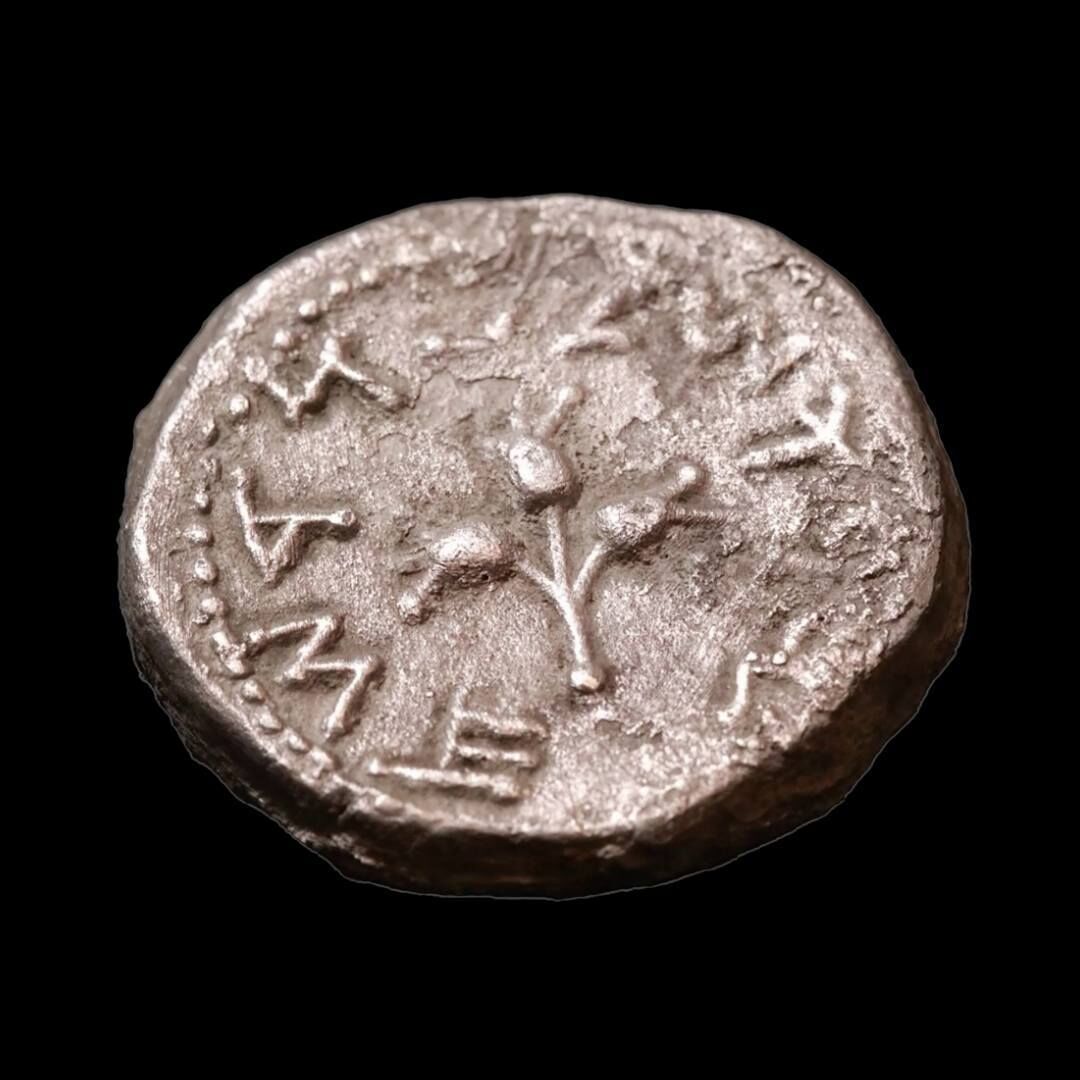The Great Revolt was a dramatic time for Israel. For four years (66–70 c.e.), the Jewish population put up fierce resistance against Roman rule, determined to establish their independence and defend their claim to Jerusalem. Few archaeological discoveries highlight the determination of the Jews at this time as vividly as revolt coins.
After the Great Revolt began, limited minting of bronze coins was granted to certain local rulers. To assert dominance and independence, Jewish rebels began minting their own currency.
Revolt coins were either made of silver or bronze. But the value of such a coin was greater than just the metal it was made with. “Coins are very symbolic,” numismatics expert Dr. Yoav Farhi said in an interview with the Armstrong Institute of Biblical Archaeology late last year. “Striking a new coin was not unimportant; it provided the Jews an opportunity to develop their own national symbol. With this coin, it not only showed the Romans, ‘We can strike silver coins without your permission,’ it also replaced the somewhat offensive coins that were used for the temple tax.”
The Romans used depictions of animals, rulers and gods on their coins. The Torah, however, prohibits such images of deities and deified rulers. The Jews used vegetal and temple-related religious motifs. They also used the archaic Hebrew script for their coinage, reinforcing their defiance and desire to return to their administrative roots from centuries past.
Two recent discoveries published shortly before Tisha B’Av—a day of mourning that commemorates the destruction of Jerusalem’s temples—are an important and sobering reminder of this history.
‘Holy Jersualem’
A silver half-shekel coin, dating to the first year of the Great Revolt, was discovered in the En Gedi Nature Reserve.
For six years, the Israel Antiquities Authority (iaa) along with the Ministry of Heritage and the Civil Administration Archaeology Staff Officer have been conducting the “Judean Desert Survey.” This project aims to retrieve archaeological treasures before looters get to them.
On one side, the coin, which dates to 66–67 c.e., bears an inscription in ancient Hebrew script that reads, “Holy Jerusalem,” as well as an engraving of three pomegranates. The other side depicts a chalice with the Hebrew letter “aleph,” which indicates the coin was minted in the first year of the revolt.

Found at the entrance to one of the caves, archaeologists theorize that this coin, minted in Jerusalem, was in the pocket of a rebel and fell out during their escape to the desert.
“The discovery of the half-shekel coin is … first-hand evidence of a turbulent period in the history of our people 2,000 years ago, in a period of extremity and discourse that divided the nation and led to destruction,” iaa director Eli Eskosido said. “After two millennia we have returned to our country, and Holy Jerusalem is again our capital. The find of the coin at these times is a reminder for us of what happened in the past, teaching us the importance of working toward unity.”
‘Freedom of Zion’
Archaeologists working under the direction of the iaa unearthed remains of collapsed buildings when excavating what would have been the main street of Second Temple Period Jerusalem (now referred to as the “Pilgrim’s Road”). Inside the structures, archaeologists discovered charcoal, fragments of decorated stone vessels, a stone weight, a crucible for metal melting and a bronze bowl.
Perhaps the most fascinating discovery, however, was a second-year Great Revolt coin that bears the inscription: “For the freedom of Zion.”

A key feature of the coin that makes it especially interesting is a hole pierced through the center. Yaniv David Levy, a researcher in the coin department at iaa, said: “It is clear that the coin was intentionally pierced, and the hole was not the result of natural wear of the material. The coin was deliberately pierced to allow it to be hung. The identity of the person to whom the coin belonged will likely never be known, but preserving objects as souvenirs is not a new phenomenon.” It is clear that this revolt coin was hung (perhaps around the neck) as an item of pride.
iaa excavation directors Shlomo Greenberg and Rikki Zalut Har-Tuv conclude: “All these findings together paint a picture of the lives of the residents who lived in Jerusalem just prior to the destruction. To return to Jerusalem after 2,000 years and rediscover the remains of the destruction, especially in an excavation taking place shortly before Tisha B’Av, is a very moving experience that cannot leave us indifferent.”

